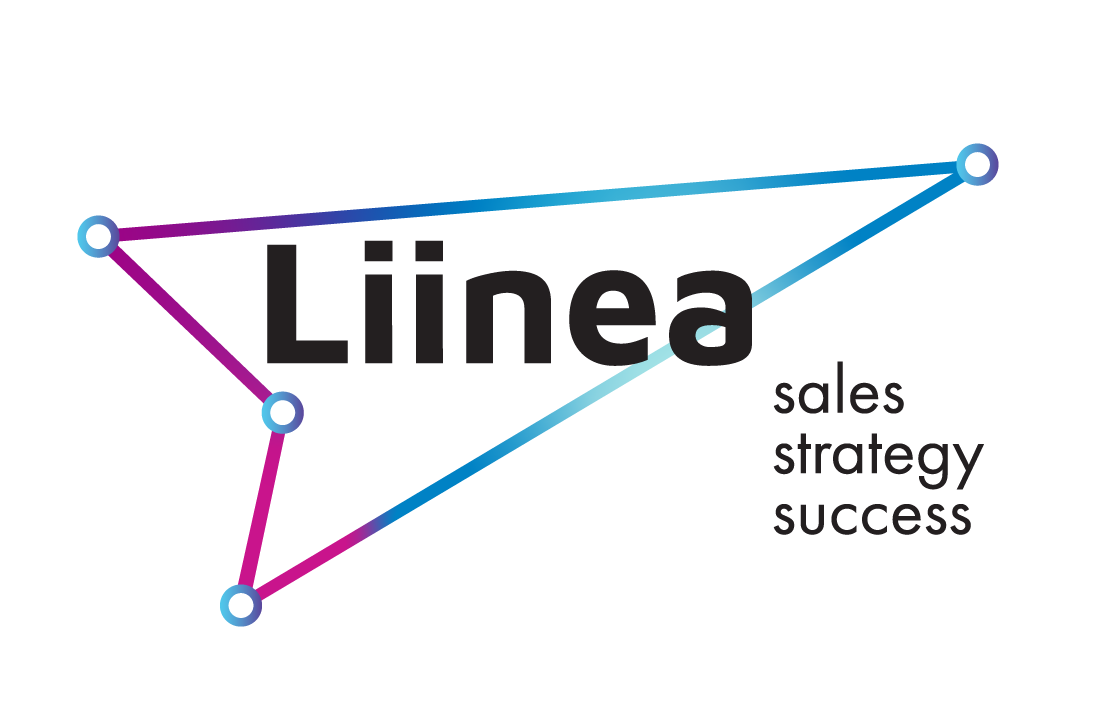Karina Collis
The 9 essential sales Steps
towards your first client
towards your first client
By Karina Collis, June, 2020
What can be harder than building a product? Selling it!
As the CEO or Founder of a SaaS startup, it is your job to lead the sales team in presenting your product to the market. It does not matter if you do not have any formal training in sales, enough resources or a well-defined sales process. You have to come up with a sales strategy that will get you the first clients.
But as you may already know, attracting B2B customers is not a simple task. Many startups fail during the startup phase for not coming up with the right
So how do you go about it?
Sales have very similar aspects to battle. An excellent example to look at is Alexander the Great. He is one of the best war strategists to have ever lived. A big part of his success was from the impeccable planning before going into any war. He is known to have been a perfectionist who was keen on all details. With a clear and well thought out plan of attack, he was always formidable, and his success rates were very high.
In the same way, a SaaS Company can only thrive if you clearly define your sales goals and come up with a robust strategy that breaks down how you will approach your clients and get them to buy. Here is a quick, simple approach from our sales playbook that you can use to implement a simple sales methodology to increase your chances of success and lead to faster growth.
But as you may already know, attracting B2B customers is not a simple task. Many startups fail during the startup phase for not coming up with the right
So how do you go about it?
Sales have very similar aspects to battle. An excellent example to look at is Alexander the Great. He is one of the best war strategists to have ever lived. A big part of his success was from the impeccable planning before going into any war. He is known to have been a perfectionist who was keen on all details. With a clear and well thought out plan of attack, he was always formidable, and his success rates were very high.
In the same way, a SaaS Company can only thrive if you clearly define your sales goals and come up with a robust strategy that breaks down how you will approach your clients and get them to buy. Here is a quick, simple approach from our sales playbook that you can use to implement a simple sales methodology to increase your chances of success and lead to faster growth.
9 Sales Steps to Refine your B2B Sales Process
The first step to creating an excellent B2B SaaS sales strategy is to answer the question, "How can I get more clients to purchase my product?" To find the answer, you need to identify who your ideal clients are and know how you can satisfy their needs. Then, you should figure out how to get your product to them.
1. Identify your Marketing Persona

Who are you selling your product to? Before you can take your product to the market, you need to be clear on who you are targeting. The best way to do it is by coming up with a marketing persona that ideally matches your customer profile.
For a persona, you need to clearly define some essential elements such as the job title, industry, location, demographics, and any other characteristic that helps in the making of a purchasing decision.
Once you have a clear definition of your marketing persona, you can visit your network and find the right people to engage. The person you speak to should be the target persona that you identified if you want to have a strong feedback loop. If the contact does not match the persona market, then you may lose out on constructive criticism.
For a persona, you need to clearly define some essential elements such as the job title, industry, location, demographics, and any other characteristic that helps in the making of a purchasing decision.
Once you have a clear definition of your marketing persona, you can visit your network and find the right people to engage. The person you speak to should be the target persona that you identified if you want to have a strong feedback loop. If the contact does not match the persona market, then you may lose out on constructive criticism.
2. Visit Your Target Users and Get Feedback
It would be best if you validated that there is a definite need for your product in the market. To do so, you should visit your persona group and get to really understand their problem in-depth and how they currently solve those problems.
You should find out how they describe the current solutions and find out if the alternative you are offering is a better bet. If your product provides a more straightforward solution to their needs, then you are on the right track.
One place you can find your target user is on sites like LinkedIn. With their filter option, you can narrow down the search to a job title and your city of residence.
You should find out how they describe the current solutions and find out if the alternative you are offering is a better bet. If your product provides a more straightforward solution to their needs, then you are on the right track.
One place you can find your target user is on sites like LinkedIn. With their filter option, you can narrow down the search to a job title and your city of residence.
3. Make Product Improvements Based on the Feedback

The feedback you get back from your interaction with possible prospects can be insightful in improving your product. You need to ensure that your product can solve the pain of your target market.
Moreover, by offering free access to some of the initial contacts, you can as well benefit from social proof in for of testimonials, case studies, and logos that can offer credibility to your product. With enough credibility, you can get other people to use your product.
Additionally, you can use the data that they offer to make any future development decisions rather than relying on the hypothesis. This stage is for primary research where you can gauge the level of expectancy your product has to the market.
Moreover, by offering free access to some of the initial contacts, you can as well benefit from social proof in for of testimonials, case studies, and logos that can offer credibility to your product. With enough credibility, you can get other people to use your product.
Additionally, you can use the data that they offer to make any future development decisions rather than relying on the hypothesis. This stage is for primary research where you can gauge the level of expectancy your product has to the market.
4. Choose A Market Specific Methodology
With the right feedback, you can immediately start selling your product. It would help if you chose a suitable sales methodology that can equip you with enough confidence to engage with your prospects. How you approach your sale will depend on the market appetite, cost of the product, and complexity of the sale.
Your product needs to address an underlying problem and not just add new offerings. The benefits should give significant value through either helping to save on costs or increasing the revenue.
Your product needs to address an underlying problem and not just add new offerings. The benefits should give significant value through either helping to save on costs or increasing the revenue.
5. Incorporate a Well Defined Sales Process

There are plenty of CRM systems that you can use to manage your pipeline. You can use it to track your prospects and ensure that you maintain a good relationship throughout the sales funnel. Some popular examples include Salesforce, Hubspot, and Pipedrive. If you are less tech-savvy, you may consider options such as Zoho and Agile.
Ensure that the one you choose can connect to any source of data. Also, if you use any outbound marketing tools, you have to ensure that your selection can work well together. After setting up a sales process, you need to start a lead generation campaign to fill up the pipeline.
Ensure that the one you choose can connect to any source of data. Also, if you use any outbound marketing tools, you have to ensure that your selection can work well together. After setting up a sales process, you need to start a lead generation campaign to fill up the pipeline.
6. Create Content to Generate Leads
Inbound marketing is a pillar for many B2B SaaS companies. It involves the creation of content for education and informational purposes. The purpose of the content is to help foster trust and familiarity. It addresses the pain head-on by offering a countering solution from your product.
One common approach is to provide prospects with a form to fill in their details if they want to access some valuable information. Once they sign up, you can drip feed them the content as you take them through the funnel.
One common approach is to provide prospects with a form to fill in their details if they want to access some valuable information. Once they sign up, you can drip feed them the content as you take them through the funnel.

To add on, you need to promote the content through several channels regularly. Some of the mediums you can use include social media, email marketing, and Google advertising.
For more ways how to generate leads, check out our article on it.
For more ways how to generate leads, check out our article on it.
7. Prospect Qualification
Once you capture enough leads in your funnel, you need to qualify them. You need to collect enough data from them to get a clear assessment of their needs. You can use marketing automation software to help in the qualifying process by sending your prospects plenty of valuable emails for several weeks or months.
The goal is to always appear in their email boxes regularly, a move to ensure that your prospects never forget you. A lead qualifies to become warm once the candidate provides you with additional information that shows their interest in making a purchase. You can learn more about the lead qualification methods here: “A New Framework for Qualifying Prospects"
The goal is to always appear in their email boxes regularly, a move to ensure that your prospects never forget you. A lead qualifies to become warm once the candidate provides you with additional information that shows their interest in making a purchase. You can learn more about the lead qualification methods here: “A New Framework for Qualifying Prospects"
8. Setting Up a Sales Meeting
After qualifying a prospect, you can set up either a remote sales meeting or a face to face meeting, depending on the solution you are offering.
The primary step in a meeting is to take your prospects through a PowerPoint presentation of your product. However, if you want to increase your chances of closing the sale, you should instead direct the meeting focus on understanding their needs better.
The primary step in a meeting is to take your prospects through a PowerPoint presentation of your product. However, if you want to increase your chances of closing the sale, you should instead direct the meeting focus on understanding their needs better.
9. Closing the Sale
Once you understand their needs better, then you can sell your product by addressing how it can help alleviate their worries. If you have followed the preceding steps correctly, then the close should not be a big problem.
Even with a well-laid plan, sometimes things may not necessarily be successful immediately. If that's the case, do not fret about going back a few steps to illuminate the areas that make the prospect hesitant. If you, however, do everything right but still do not get a sale, then you should create an actionable next step to keep the client engaged and give you another opportunity at winning them and closing the deal.
Even with a well-laid plan, sometimes things may not necessarily be successful immediately. If that's the case, do not fret about going back a few steps to illuminate the areas that make the prospect hesitant. If you, however, do everything right but still do not get a sale, then you should create an actionable next step to keep the client engaged and give you another opportunity at winning them and closing the deal.

Selling B2B software is never easy. It is especially so if your company is new and you lack the necessary resources to generate leads or if you lack enough sales experience. If you want to make a sale, you should not focus on the properties of your software but the solution.
Ask your clients questions that dig deep into their problems and show how your product can solve them. It would be best if you did not give up on a sale. Instead, it would help if you put in more work into building your relationships and maintaining them.
Ask your clients questions that dig deep into their problems and show how your product can solve them. It would be best if you did not give up on a sale. Instead, it would help if you put in more work into building your relationships and maintaining them.
Never leave a client hanging, always follow up with emails that provide value until the customer feels the need for a purchase. When they do not, keep changing the message until you can capture their hearts. Remember, the end goal of SaaS sales is to get more clients, specifically those that are long term.
Therefore, you should always strive to meet the client's needs by continuously improving to any changes in the market. To do so, it is best if you use the best technology that can streamline your sales process.
To make your work a lot easier, follow our easy to understand sales playbook that will ensure your results are a success.
Therefore, you should always strive to meet the client's needs by continuously improving to any changes in the market. To do so, it is best if you use the best technology that can streamline your sales process.
To make your work a lot easier, follow our easy to understand sales playbook that will ensure your results are a success.
| Liinea works with tech startups helping to create a Sales Playbook to scale up faster. Want to learn more? Reach out at hello@liinea.com and we will send you an example of a Sales Playbook. |
Follow us on Linkedin for more sales insights
Sign up
to join our start-ups community and learn about new sales and marketing insights
to join our start-ups community and learn about new sales and marketing insights






